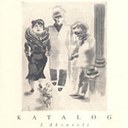0031 George Grosz and Croatian Art between the Two World Wars
Identifiers (Article)
Identifiers (Files)
Abstract
The paper analyses the key aspects of George Grosz's influence on Croatian art between the two World Wars. A number of artists, especially the members of the association Zemlja, considered Grosz to be an author of similar ideological belief, who advocated an active role of art in society. Grosz's standpoints thus indirectly influenced the formation of the overall cultural atmosphere, marked by the polarization of the entire artistic scene. The artist became one of the key reference points and a figure cited by those who exerted a crucial influence on the formation of Croatian artistic scene between the two World Wars – the writer and one of the most prominent intellectuals Miroslav Krleža and visual artists Krsto Hegedušić and Ljubo Babić. The paper also addresses the circumstances regarding the organization of Grosz's solo exhibition in Zagreb in 1932, along with an analysis of the reception of his work among Croatian art critics.
Statistics


License

This work is licensed under a Creative Commons Attribution-NonCommercial-NoDerivatives 4.0 International License.



